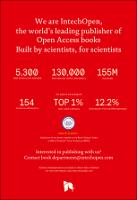Chapter Introduction to the Use of Robotic Tools for Search and Rescue
Author(s)
De Cubber, Geert
Doroftei, Daniela
Roda, Rui
Silva, Eduardo
Ourevitch, Stephane
Matos, Anibal
Berns, Karsten
Serrano, Daniel
Sanchez, Jose
Bedkowski, Janusz
Govindaraj, Shashank
Rudin, Konrad
Language
EnglishAbstract
Modern search and rescue workers are equipped with a powerful toolkit to address natural and man-made disasters. This introductory chapter explains how a new tool can be added to this toolkit: robots. The use of robotic assets in search and rescue operations is explained and an overview is given of the worldwide efforts to incorporate robotic tools in search and rescue operations. Furthermore, the European Union ICARUS project on this subject is introduced. The ICARUS project proposes to equip first responders with a comprehensive and integrated set of unmanned search and rescue tools, to increase the situational awareness of human crisis managers, such that more work can be done in a shorter amount of time. The ICARUS tools consist of assistive unmanned air, ground, and sea vehicles, equipped with victim-detection sensors. The unmanned vehicles collaborate as a coordinated team, communicating via ad hoc cognitive radio networking. To ensure optimal human-robot collaboration, these tools are seamlessly integrated into the command and control equipment of the human crisis managers and a set of training and support tools is provided to them to learn to use the ICARUS system.
Keywords
robotics, search and rescue, crisis management, disaster managementDOI
10.5772/intechopen.69489Publisher
InTechOpenPublisher website
https://www.intechopen.com/Publication date and place
2017Classification
Ambulance & rescue services


 Download
Download